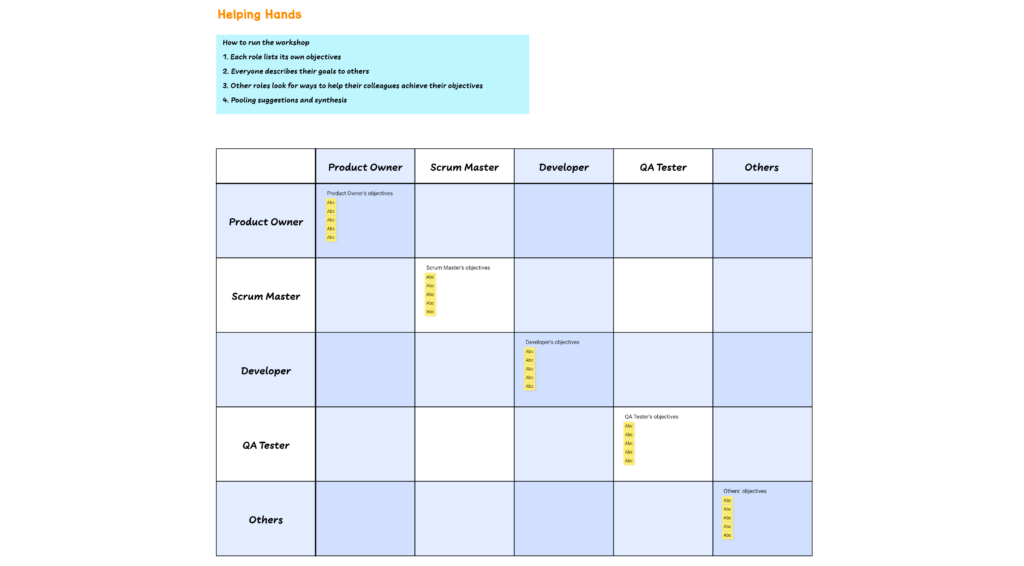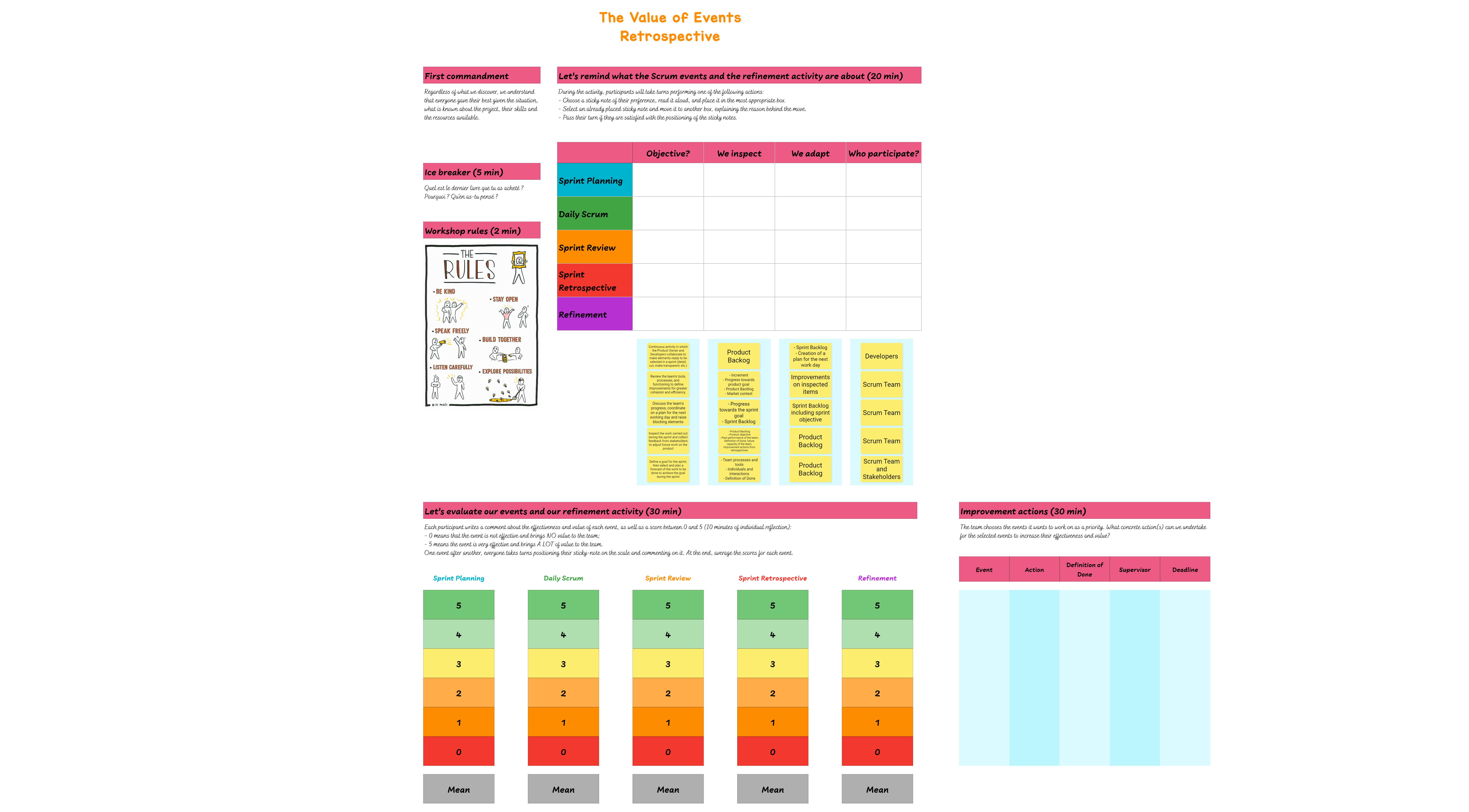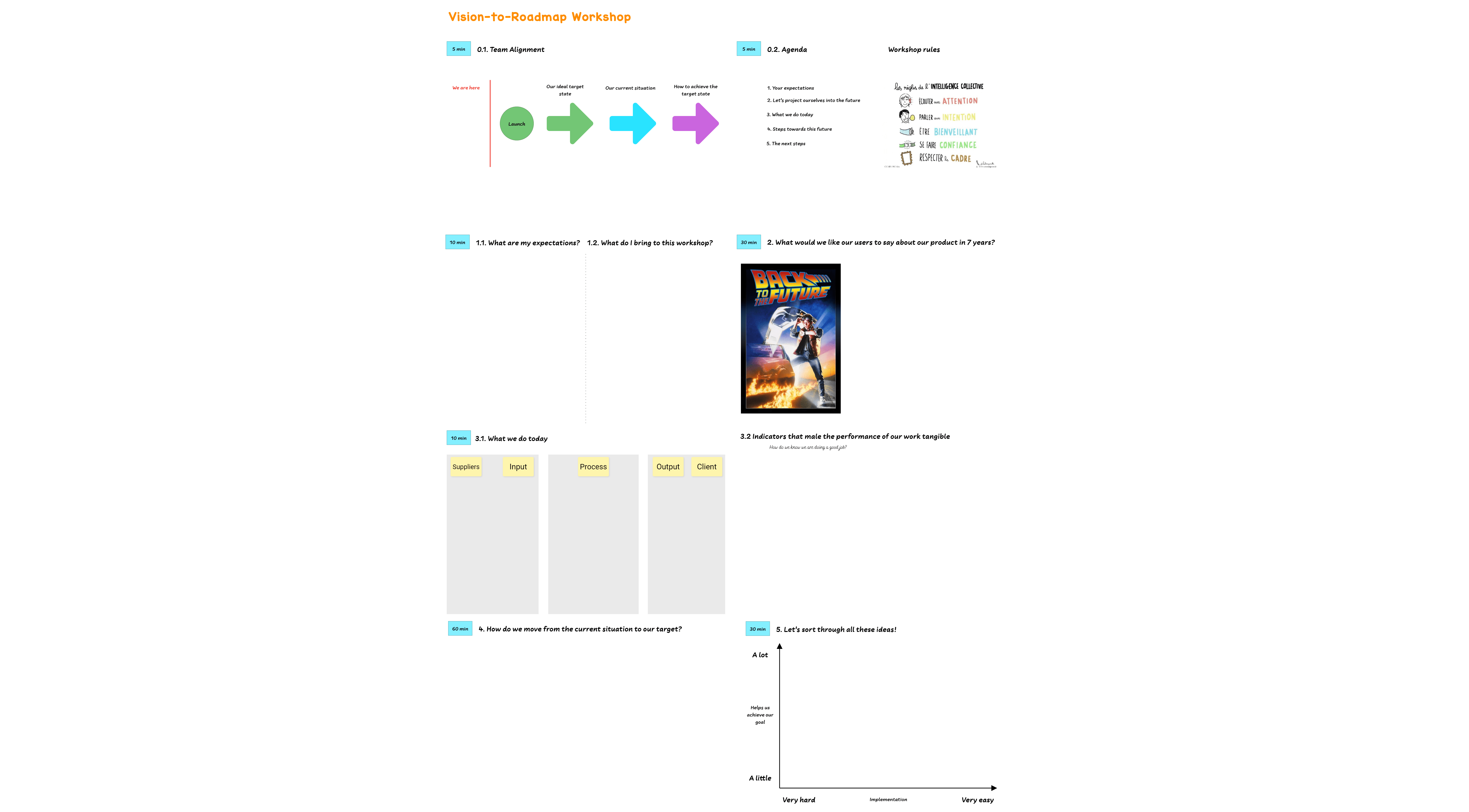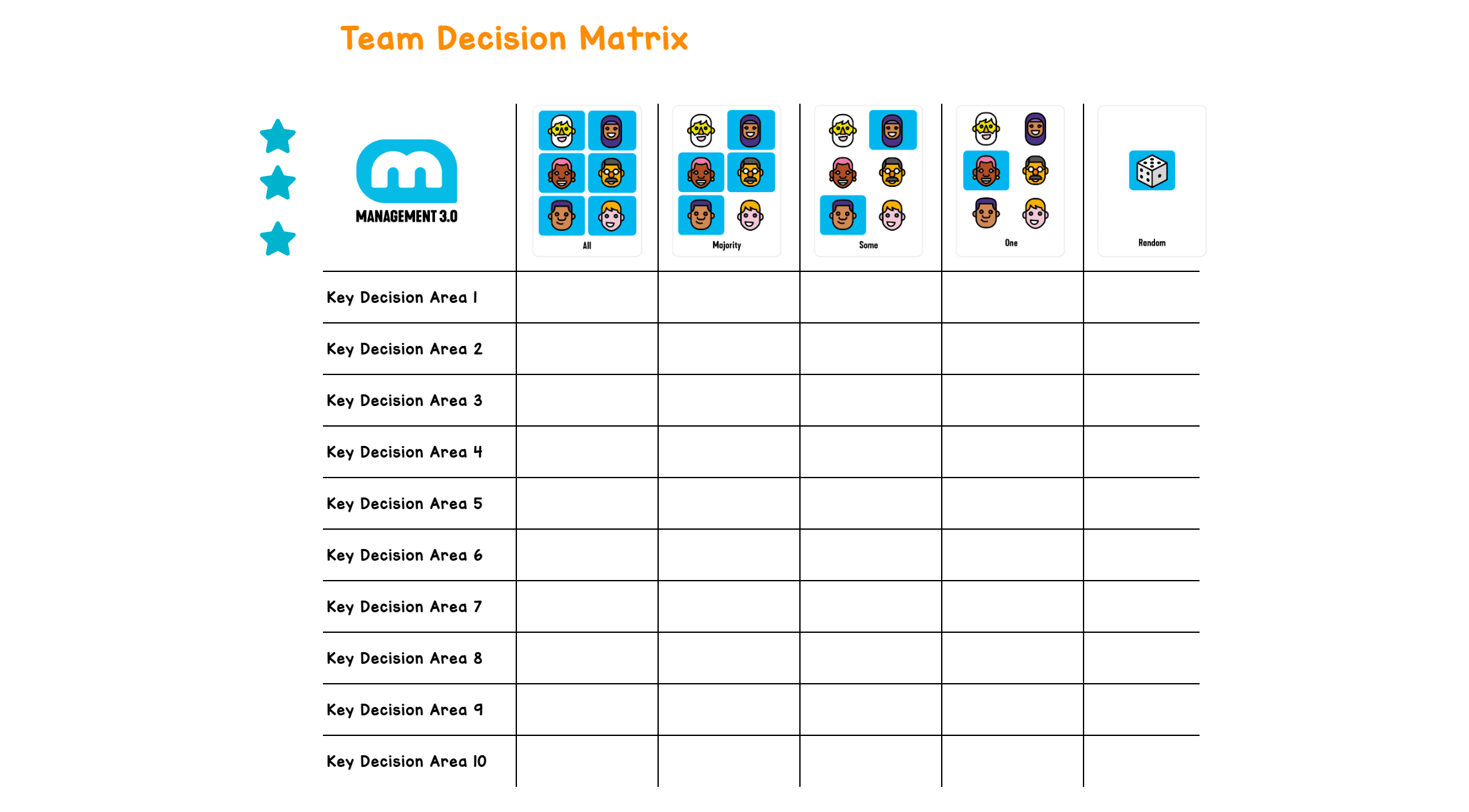Description of the workshop
Created by Nick Oostvogels, management and digital transformation consultant, the Helping Hands workshop was designed to promote mutual aid and collaborative problem-solving within a team.
The workshop aims to leverage each team member's unique skills and abilities to identify areas where they can assist one another.
The Helping Hands workshop uses a matrix that lists the various roles of team members at both the head of the row and column. During the exercise, participants can indicate the assistance they require and can offer, and clearly explain their roles in the team context. This allows for a better understanding of each team member's responsibilities and how they can help one another.
Of course, roles can be adjusted to fit your team best.
How to run the Helping Hands workshop
The workshop generally takes place in 3 stages:
Step 1: Definition of objectives
Firstly, each team member is asked to list the objectives of their role in the corresponding box. If multiple team members have similar roles, they can collaborate in the first step.
To remove ambiguity, ask each role to present their objectives orally if necessary.
Step 2: Individual reflection
After listing the objectives, each team member should individually reflect on how they can assist other roles in achieving their objectives. They should write their ideas on stickies and spend approximately ten minutes on this process.
The head of the row corresponds to the role of the thinking member, while the head of the column corresponds to the role they want to assist.
You can use the polling booth mode to prevent anchoring bias.
Step 3: Pooling suggestions
At this step, team members take turns suggesting ways to help each other with their respective roles, starting from the left and moving right. This often sparks discussion among the team, leading to more suggestions for assistance.
If multiple proposals are made, it's recommended to prioritize them and implement them in an iterative and incremental manner.
On the other hand, if no suggestions are made, the facilitator should encourage team members to take at least one action each. Mutual support is a fundamental value for Agile teams and is crucial for their success.







